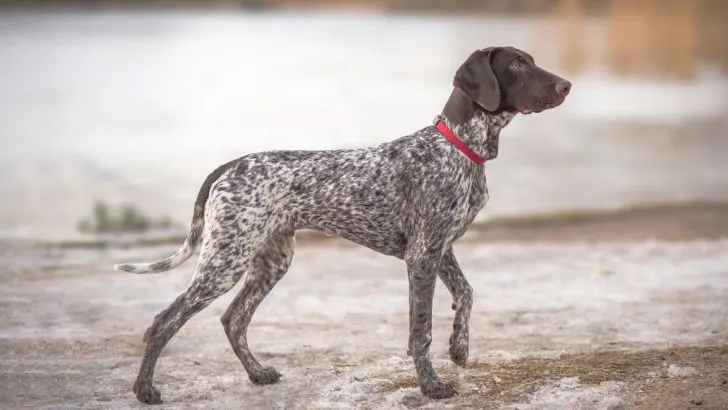Do you own a German Shorthaired Pointer puppy, or are you planning to get one? Then you need a German Shorthaired Pointer Growth chart!
GSPs make good playmates and hunting dogs for many various types of people. No wonder these pups are so loved by many people all around the United States!
Understanding just how big these dogs get can help you decide whether this is the right dog breed for you.
Not only that, but a German Shorthaired Pointer growth chart can help you see all the important milestones your new pet will reach. With this, you’ll know your doggie is on the right track to become a healthy adult dog.
Here’s everything you need to know about all the different GSP growth stages and their proper development, as well as some factors that might affect your pup’s growth:
German Shorthaired Pointer Growth Chart
| Weight | Height | |
| 1 month | 6 – 8 lbs | 8 – 10 inches |
| 2 months | 10 – 13 lbs | 10 – 12 inches |
| 3 months | 20 – 24 lbs | 12 – 14 inches |
| 4 months | 26 – 31 lbs | 14 – 16 inches |
| 5 months | 33 – 37 lbs | 16 – 18 inches |
| 6 months | 40 – 44 lbs | 18 – 20 inches |
| 7 months | 42 – 49 lbs | 20 – 22 inches |
| 8 months | 44 – 53 lbs | 21 – 23 inches |
| 9 months | 46- 55 lbs | 21 – 23 inches |
| 10 months | 50 – 57 lbs | 21 – 24 inches |
| 11 months | 51 – 59 lbs | 21 – 24 inches |
| 12 months | 52 – 62 lbs | 22 – 24 inches |
| 24 months | 53 – 64 lbs | 22 – 24 inches |
GSP Growth Stages
It’s true that individual dogs can grow at different rates. Some pups are late bloomers; others will be much larger for their age early on. Just because you have a slightly smaller puppy doesn’t necessarily mean that something is wrong.
Still, a significant size difference is never a good thing, and this can indicate that something is seriously wrong with your beloved puppy. This is where a GSP growth chart becomes handy.
A good idea to help make sure your pup is healthy is to write a weight journal. This can help keep track of every little detail, so if you ever need to visit your veterinarian due to any concerns, you’ll be able to provide them with all the important information.
Without further ado, here are all the growth stages of German Shorthair Pointers and what you can expect from month to month:
0-4 Weeks

At this young age, your GSP isn’t likely to do much. He’ll spend most of his time sleeping and eating.
Puppies that are younger than four weeks entirely depend on their mother’s milk, so you don’t need to worry about feeding them – unless their mother left them, in which case you need to give them a formula. No, cow milk won’t do, as it doesn’t provide pups with proper nutrition.
GSP puppies are born blind and deaf, and they will remain that way until at least three weeks of age. During this time, they’ll experience significant growth in a very short time.
1-2 Months
At the beginning of their second month, your puppy is likely to open his eyes and become more curious about the world. He’ll still depend on his mother for protection, but he’ll start weaning off her milk.
Once they are around five weeks of age, the milk will no longer satisfy the nutritional needs of a puppy, and he’ll start eating solids. This is the time to start giving him puppy food.
This transitional period can be challenging for a puppy’s stomach, so make sure to slowly introduce any solid food. Carefully monitor for any weight gain or loss, as puppies so young might not know when to stop eating.
Also, this is the time to start socializing your pup. GSPs need early socialization to tame their high prey instincts and to ensure they are prepared for the outside world.
2-3 Months
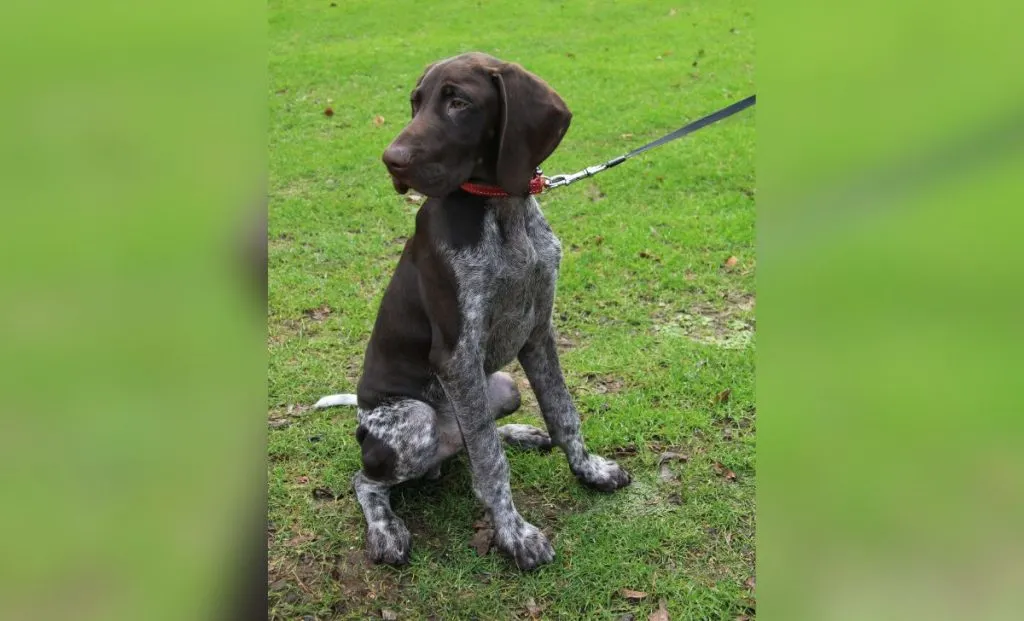
Your pup’s growth rate will increase during this time, and it might seem as if your GSP is growing taller and heavier every day!
By the time your pup reaches three months of age, he should’ve completed deworming and the first sets of vaccinations for common health issues puppies can get, such as canine parvovirus.
German Shepherd Pointers also become stronger and more independent, so this might make you think it’s time to start taking them to long walking sessions, but this would be a mistake.
Your puppies are still fragile, and too much exercise can harm their overall health.
Instead, focus on socialization. GSPs need lots of it, and this is the right time to expose your puppy to all the new smells, animals, people, and environment.
Oh, and your pup should entirely eat solids by this time.
3-4 Months
At this age, your puppy will experience some slower but steady growth. He is already halfway there, so there is no need to rush!
This is when your GSP’s personality will start to shine, and you’ll see all the traits differentiating him from his peers. Oh, and German Shorthaired Pointer colors should be entirely distinguishable during this period.
The initial socialization process will be over, and while he’ll still need to learn as much as possible about the outside world, he should already be used to most environments, pets, and people.
This is just the right time to start with training! Yes, your pooch is still a teenager, but the earlier you start, the better the results will be. Just make sure to find a way to keep his focus on you. Chances are he’ll find everything else more interesting than his lessons.
4-6 Months

By the time they are between four and six months old, your GSP will do all he can to test your limits and see how much he can get away with. Don’t give in – you need to be firm with your training and teach him right from wrong.
Not much will change during this time. Your pup will still keep on growing tall and strong, and you might even see some muscle mass forming.
6-12 Months
By the time your pup is six months old, it’s time to switch to adult dog food!
Once again, transitional periods are hard for digestion, and this can lead to diarrhea and stomach upset.
To prevent this from happening, make sure the transition is gradual. Start by mixing a small bit of adult food with his puppy food and increase the amount every few days.
This will not only help his stomach get used to new nutrients but also help you notice if your pup has any food sensitivities or allergies.
Make sure you give your GSP enough exercise so he can deplete his high energy levels. Otherwise, you are risking having your furniture destroyed.
Finally, your pup should look like a smaller adult dog throughout this stage. He’ll lose most of his puppy features and will resemble adults – although he isn’t likely to behave like one.
Once your dog reaches sexual and physical maturity, it’s time to spay or neuter him. Contact your vet to see when is the right time for this procedure.
1-2 Years
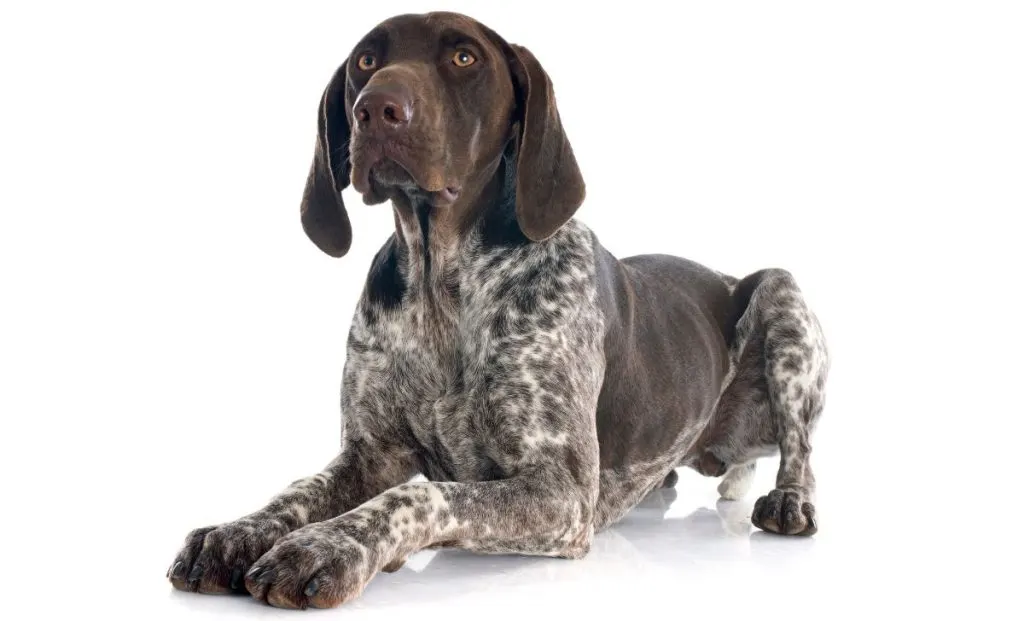
Congratulations! Your German Shorthaired Pointer is now an adult.
By now, he should’ve learned most of the basic commands, be sociable toward other people and pets, and he should reach his full height.
His muscle mass might still grow a bit, so you might see some minor fluctuations in weight. Don’t worry; this is perfectly normal, and most dogs are fully grown at around 18 months of age.
However, if this weight gain is significant or prolonged, you might need to feel his ribs to make sure he is not becoming overweight.
Keep on providing your GSP with proper exercise amounts and don’t switch his diet too much anymore – at least not until he is older.
You’ve done a great job at raising your new puppy!
Factors That Affect Growth
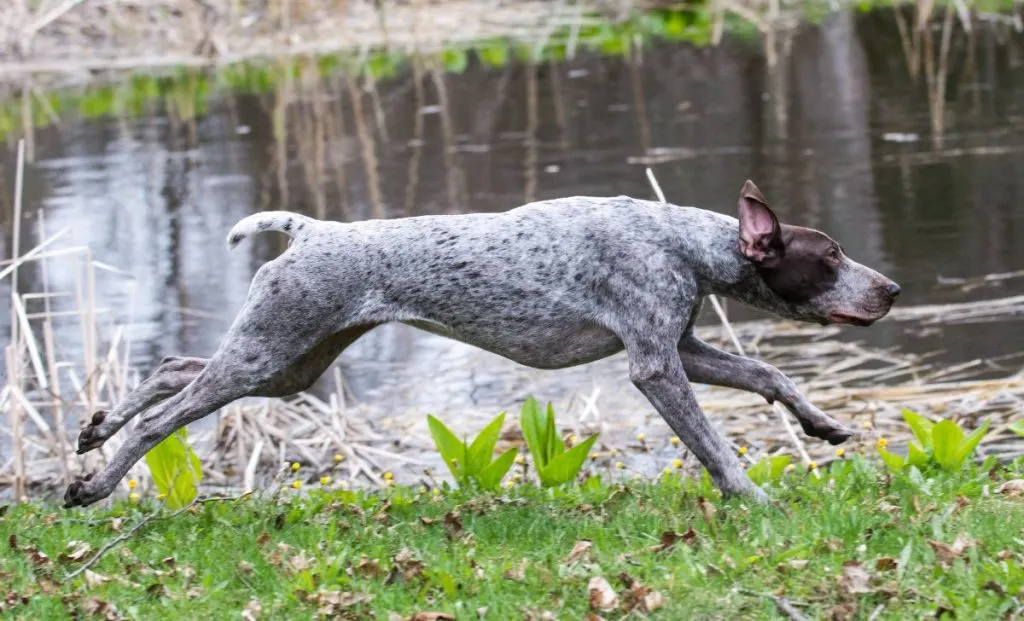
As mentioned before, not all pups will enter these distinct stages at the same time. There are many factors that can affect both physical and cognitive growth, and not all of them are a reason for concern.
If your pup is just slightly larger or smaller than normal, maybe you’ve changed something in his diet, or he simply has somewhat different genetics. Some pups might stay smaller due to lack of physical activity, as well.
However, if a dog’s height and weight is significantly different from what it should be, it’s time to take him to the veterinarian. Maybe there are some underlying health problems, or your dog is, in fact, a crossbreed.
Here is everything that can affect your GSP’s growth:
Genetics
Genetics plays the most important factor when it comes to a dog’s growth. If you look at different breeds, from Golden Retrievers and English Setters to Corgi growth charts, there is a reason why these pups are in different sizes: Their genes.
Each different dog has different genetics for all of its features, from color to size. This is why German Shorthaired Pointers come in some colors but cannot be found in other ones.
This is also the reason why there are carefully planned breeding programs in which breeders choose dogs with specific features they want to keep on spreading.
If your GSP puppy had a smaller or a larger parent, then he or she might also have a size that isn’t entirely up to the breed standard.
On the other hand, if your GSP is not even close to the size he should be (if you’re following the chart, at least), maybe he is a crossbreed.
Chihuahua mixes, for example, are likely to be much smaller than their non-Chihuahua parents due to the specific combination of genes.
Unfortunately, you can never know with certainty just how big your pup will be. There are DNA tests conducted by veterinarians that can give you a slight insight, but even they are not fully precise.
Nutrition
Proper diet is another crucial aspect of a pup’s development process. Without essential nutrients, your puppy’s body cannot grow and reach its full adult height and weight.
As he belongs to a high-energy breed, a GSP puppy needs lots of proteins, fats, and even some carbs to grow. This is why a good large-breed food should always have a protein source listed as its first ingredient.
This protein source could be anything, from poultry and beef to fish. The only important thing is that your pet should have enough energy to stay active all day long.
A balanced diet can also ensure your pup develops properly, as it reduces the chances of some health conditions, such as diabetes.
Physical Activity
Physical activity is another important aspect of a dog’s overall health.
As mentioned before, German Shorthaired Pointers are active dogs that need a lot of activity to stay happy and healthy.
However, too much exercise too early is not good. If you start training your dog too soon and take him to long jogging sessions or walks in the park, your GSP might be at a higher risk of developing some health conditions, such as hip dysplasia or patellar luxation.
Any bone or joint problem can halt a dog’s growth, as his body won’t develop properly.
On the other hand, if a dog doesn’t get enough exercise, his muscles won’t form at the right time. This will impact his strength, energy, and growth rate.
Also, when a dog isn’t active enough, he is more prone to weight gain and obesity, which can lead to further health complications.
Balance is the key, and finding just the right amount of exercise can be vital for your pup’s growth.
Spaying And Neutering
Did you know that spaying and neutering can also impact a dog’s size?
While finding the exact cause of your pup’s improper size can be a challenge, try considering his age when he was fixed. Was it when he was younger than a year, maybe even at six months? If he is growing too quickly, chances are this is the reason.
Research has proven that early spaying or neutering will affect hormones responsible for your GSP’s growth. This isn’t bad on its own and won’t have any effects on your doggie’s well-being. However, it can lead to his growth not stopping when it should’ve.
Many owners of large dogs, such as Boerboels, choose to fix their pets as soon as possible, as they want to end with an intimidating dog that will scare all the intruders away.
The owners of German Shepherd Pointers rarely need a huge dog, however, so they don’t really care about these things. Still, they are good to know, especially if you’ve realized you’ve got the smallest male in the park!
One important thing I have to add: This shouldn’t stop you from spaying or neutering your German Shorthaired Pointer. Spaying and neutering have numerous health benefits, and they can help your dog behave in a better way.
Just make sure to consult a vet and follow their guidelines. Overall, most pups are fixed once they reach sexual maturity, but your vet might suggest doing this procedure sooner or later for various reasons.
Health
Finally, there are many health conditions that can affect your GSP’s size and development.
If your puppy gets sick at an early age, this illness can affect his growth. For example, many parasites, such as roundworms or hookworms, will live in your dog’s intestines. This means your pup won’t get all the beneficial nutrients, no matter how much he eats.
Similarly, many bone and joint disorders will cause your dog to stay small, as he won’t develop the right way.
Considering that these are some of the most common health issues in GSPs, they are the leading cause of a dog staying small for too long.
Regular vet checks are crucial at the delicate growing stage, as the sooner you find out there’s something wrong, the less damage the disease can cause.
Many times, once a dog heals, its growth rate normalizes, and it will reach a healthy size in no time.
However, if your pup has been sick for too long, he might stay a bit smaller than his peers.
You can notice whether your dog has worms by looking at his stool or feeling his stomach. If your pup appears bloated, he might be dealing with some parasites.
Either way, it’s a good idea to take your pup to the vet whenever you suspect something is wrong.
How Fast Do German Shorthaired Pointers Grow?
Not all dogs grow at the same rate, and it’s challenging to say just how quickly your pup will reach its full size.
In general, however, German Shorthaired Pointers will reach full height when they are between 12 and 18 months of age.
Their muscle mass can keep on developing for some time, but even this should stop by the time they are two to two and a half years old.
This can differ based on the factors I’ve mentioned above, as well as on whether you have a male or a female GSP, but it’s always easier when you know what to expect.
What If My German Shorthair Pointer Is Overweight?
Sadly, some dogs end up overweight and obese. In fact, a survey conducted by the Association for Pet Obesity Prevention discovered that about 56% of dogs in the United States are overweight or obese!
If you notice your GSP is a bit plump around the stomach, don’t worry. You can still help him lose the extra weight and return to full health.
A balanced diet and regular play times and walks are crucial for helping your pup stay a healthy weight.
Don’t give in to those puppy eyes and give him extra food, no matter how much he begs. GSPs are walking vacuum cleaners that will eat anything they can get, and they’ll never feel full.
Obesity in dogs is not an aesthetic issue. Dogs that are too heavy are prone to many health problems, from diabetes and joint disorders to heart illnesses.
Fortunately, if you do all you can to make sure your dog is up-to-date with the German Shorthaired Pointer growth chart, you’ll likely never have to worry about making your dog lose weight.
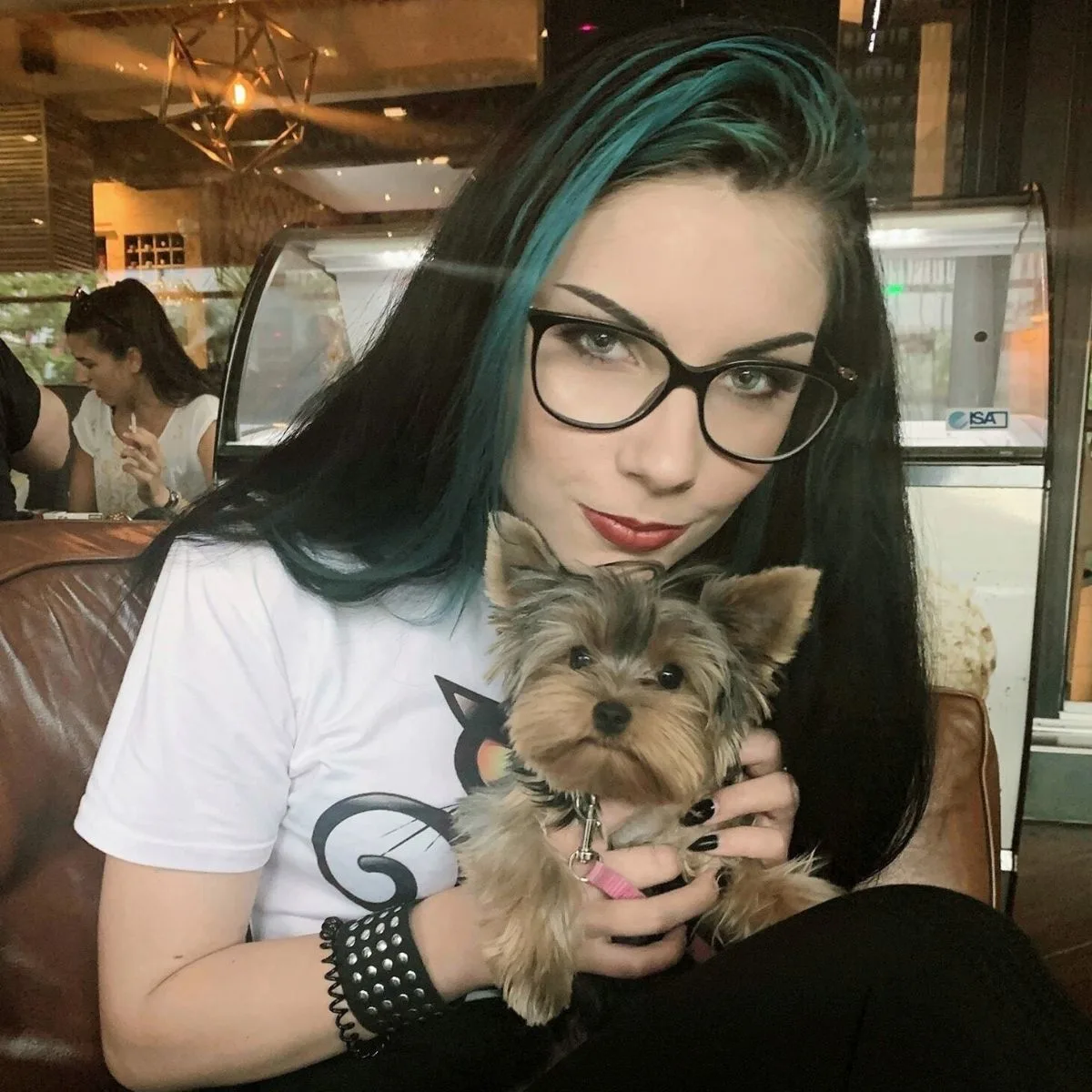
Vanja’s passion for writing started at an early age, which is why she pursued Journalism as her college degree. She can research any topic and find all the information before you bat an eye, which is a great thing for her job but a terrible one for her husband.
Even as a young child, she fell in love with everything fluffy – but dogs have a special place in her heart due to her childhood companion, a Corgie named Archie.
Motivated by her experiences and driven by a desire to give back to her four-legged companions, she spends her free time volunteering at a local dog shelter.
